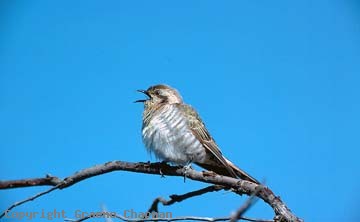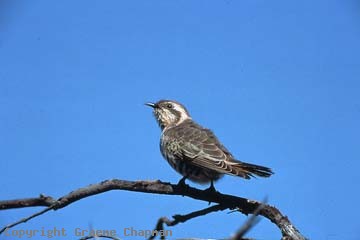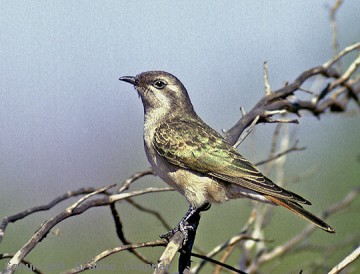
It's probably worth pointing out that the word Horsfield is very often mis-spelt as Horsefield. Nothing to do with horses, it is derived from the name of a prominent 19th century naturalist, Thomas Horsfield who, together with Nicholas Vigors named a number of Australian birds in a now historic publication " A description of the Australian birds in the collection of the Linnean Sociery with an attempt at arranging them according to their natural affinities" in the Transactions of the Linnean Society of London, 1827.
Horsfield's Bronze-Cuckoos are found over most of Australia and Tasmania and also some outlying islands. In southern Australia they are generally regarded as migrants, arriving in Spring and leaving in Autumn. However there are exceptions - it's amazing how they turn up in desert areas at other times so long as the conditions are lush and the birds are breeding. Outside of Australia they occur on many islands to the north and as far afield as S.E. Asia, but exactly where our birds migrate to, nobody knows.
In Australia, they are mainly open-country birds - coastal heathland, inland acacia scrubs, mallee, saltbush and grassland etc (so long as there are odd shrubs and the like). They do also occur in the drier, more open forests, but forest in general is the province of the Shining Bronze-Cuckoo.
Horsfield's mainly parasitise hosts which build covered nests, like fairy-wrens and thornbills but the list of known hosts is long. Their finely spotted, pinkish eggs do resemble those of fairy-wrens, however sometimes they lay in open nests, such as in Pic#342209 of a Red-capped Robin, and in this case the colour of the egg contrasts strongly with that of the host.
Quite a few people have difficulty in telling Horsfield's Bronze-Cuckoos from Shining Bronze-Cuckoos. First and foremost, their calls are diagnostic (listen on sound pages). A lot has been written about the amount and extent of barring on the underparts, OK for adults, but this varies with age and is not a reliable character, excepting to say that if a bird is barred right up to the chin, it's a Shining.(or a Little-bronze)
The distinctive characters to look for in an Horsfield's Bronze-Cuckoo are:-
1. Rufous in base of tail (see pic 342207)
2. Rich red-brown eye in adult males (the ones you mostly see because they sing a lot and attract attention)
3. Wings and coverts have a clearly scalloped appearance - each feather has a pale edge. (pic 342210)
4. Clear pale eyebrow above a dark stripe through eye (342207).
5. Virtually no barring on the throat (342206).




